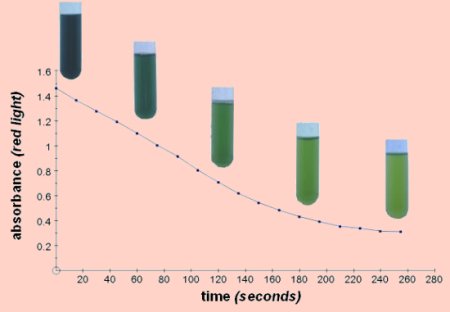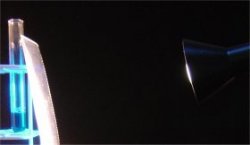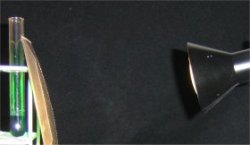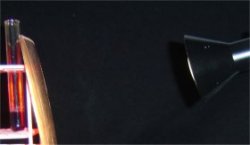Hill Reaction
The light-dependent stage of photosynthesis
Robert Hill was a British biochemist who, in a series of papers published between
1937 and 1940, showed that the first stage of photosynthesis involved the photolysis,
(splitting), of water to yield oxygen.
When light energy is absorbed by chlorophyll electrons are raised to a high energy
level and transferred to the electron carrier NADP.
The electrons from chlorophyll are replaced by splitting water, yielding oxygen
(O2), electrons (e-) and hydrogen ions (H+).
In the chloroplasts of plant cells NADP is reduced to NADPH when it combines with
an electron from chlorophyll and a hydrogen ion from water.
The reaction can be demonstrated in isolated chloroplasts using
DCPIP
to replace NADP as the electron acceptor.
DCPIP is reduced from blue to colourless by the addition of electrons.
It is much easier to get this to work than some textbooks and methods imply.
It is good practice to keep everything cool, so use reagents from the fridge or
keep them on ice. However, this is not critical for the practical to work.
Make fresh suspension each day, though the chloroplasts will retain around 50% of
their activity after 24 hours in the fridge.
|
DCPIP
is irritant but at the concentration used here is a low hazard and does not
need a warning label.
|
 |
|
Varying the intensity of light
You can vary the intensity of light by
-
measuring the distance between the light source and the sample,
(light intensity is proportional to the inverse square of the distance - I=1/d2)
- controlling the light with a dimmer switch
- placing neutral density filters between the light source and the sample.
You may want to consider how to make sure that the heat from the light source does not affect the result, but this is unlikely to be significant over the short period of time needed for the reaction.
|
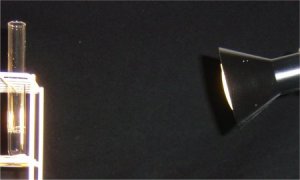 |
Absorbance vs Time
Reaction mix exposed to a 50W halogen light at a distance of 25cm.
Absorbance vs Time using different coloured filters
These results were obtained using a set of filters that each transmitted the same total amount of light, (approx 10%). The reaction mix was exposed to a 50W halogen light at a distance of 25cm. Indandescent bulbs will not give a good result with the blue filter as they do not emit much blue light.
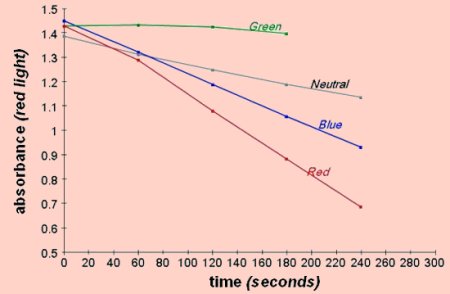
|
The reaction mixture contains a suspension of chloroplasts in buffer containing
DCPIP
.
This should be kept in the dark until it is exposed to whatever lighting conditions are being investigated.
Read absorbance using red light, (635nm).
If you are not using a colourimeter you can get qualitative results by eye.
|
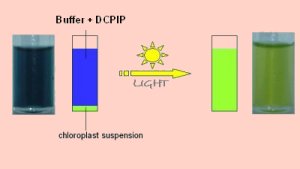
|
Preparing a suspension of chloroplasts.
Reaction mixture
The suggested reaction mixture for a 4cm3 cuvette is:
|
DCPIP (0.1% solution)
|
0.1cm3
|
|
Hill reaction buffer
|
2.8cm3
|
| Chloroplast suspension |
0.1cm3
|
-
You can premix the DCPIP and buffer in sufficient quantity for a number of experiments and this will keep well.
-
The DCPIP/buffer should be warmed to the experimental temperature, (25°C works well).
- Add the warmed DCPIP/buffer mix to the chloroplast suspension in a test tube and keep this in the dark.
-
The mixture can be poured into a cuvette to read absorbance, (red light), then transferred back to the test tube to be exposed to whatever lighting conditions you are investigating.
-
If you are not using a colourimeter you can get qualitative results by eye.
Hill reaction buffer - 0.15M phosphate buffer pH 6.5 with added glucose and KCl.
To make 100cm3 of buffer:
Make up to 100cm3 with water.
|
